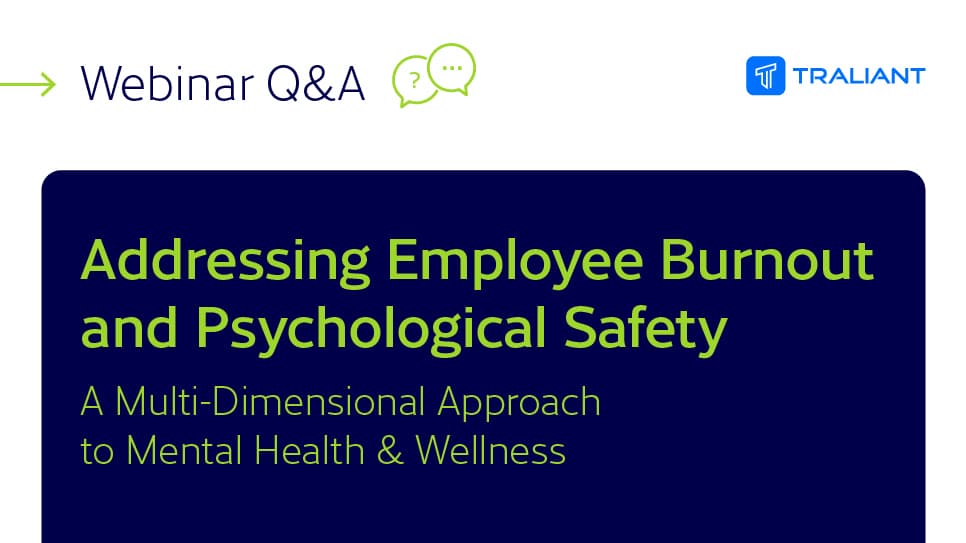
How HR leaders can navigate inclusion training with confidence
Inclusive Workplaces


Surveys consistently find that burnout is among the top reasons employees fail to perform at their best and leave a company.

Surveys consistently find that burnout is among the top reasons employees fail to perform at their best and leave a company. The popularity of Traliant’s February 16 webinar on tackling employee burnout confirms that companies are increasingly turning to health and wellness programs as a way of attracting and retaining employees that are today prioritizing wellbeing over salary.
Led by Traliant’s Maggie Smith, Senior Vice President of Human Resources, the webinar, “Addressing Employee Burnout and Psychological Safety: A Multi-Dimensional Approach to Mental Health & Wellness”, addressed company culture and the 8 dimensions of well-being. Joined by speakers John Arendes, Traliant CEO, and Julie Brisco, Director of Services for the National EAP, the panel also discussed the warning signs of professional and personal stress and shared best practices for addressing it.
It was impossible to address all the questions from listeners during the 60-minute webinar. Below are the answers to additional questions we received.
What are signs of burnout that employees and managers should lookout for?
Burnout can present itself at work in many ways. The most common signs are:
Often, burnout is reflection of underlying personal problems, including:
Ongoing health and wellness training increases awareness of the warning signs of stress and burnout and fosters a more compassionate workplace support system.
How do you encourage employees to proactively prioritize their wellness?
Overachieving employees can be most prone to burnout by refusing to set boundaries. It’s a coaching opportunity for managers to talk to these employees about health and wellness risks of stretching themselves too thin by burning the candle at both ends. Managers can pull these employees aside to say, “I love that you work hard, but I can see that you’re sending e-mails after hours and on weekends and that’s not healthy.”
Working hard can be a way an employee deals with a personal problem and stress. Managers should inquire if there are other things going on in an employee’s life. Although this can be a delicate conversation, it’s important to have. If a person is willing to open up and talk about distractions in their life, you can often help them with resources available at the EAP (Employee Assistance Program).
What initiatives should organizations implement outside of EAP to improve well-being?
Creating a culture of well-being is an iterative process. What’s most important is taking the first step.
How does an organization foster a psychologically safe work environment?
Employees look to managers and coworkers for confirmation that its okay to prioritize their health and wellness. They want to know they won’t be punished for saying they’re having a stressful day or for needing to take time off to take their child to the doctor.
Psychological safety is created by building employees’ trust so that they can honestly express themselves without a fear of retaliation. Ways to do this include:
To listen to an on-demand replay of the full webinar, click here.